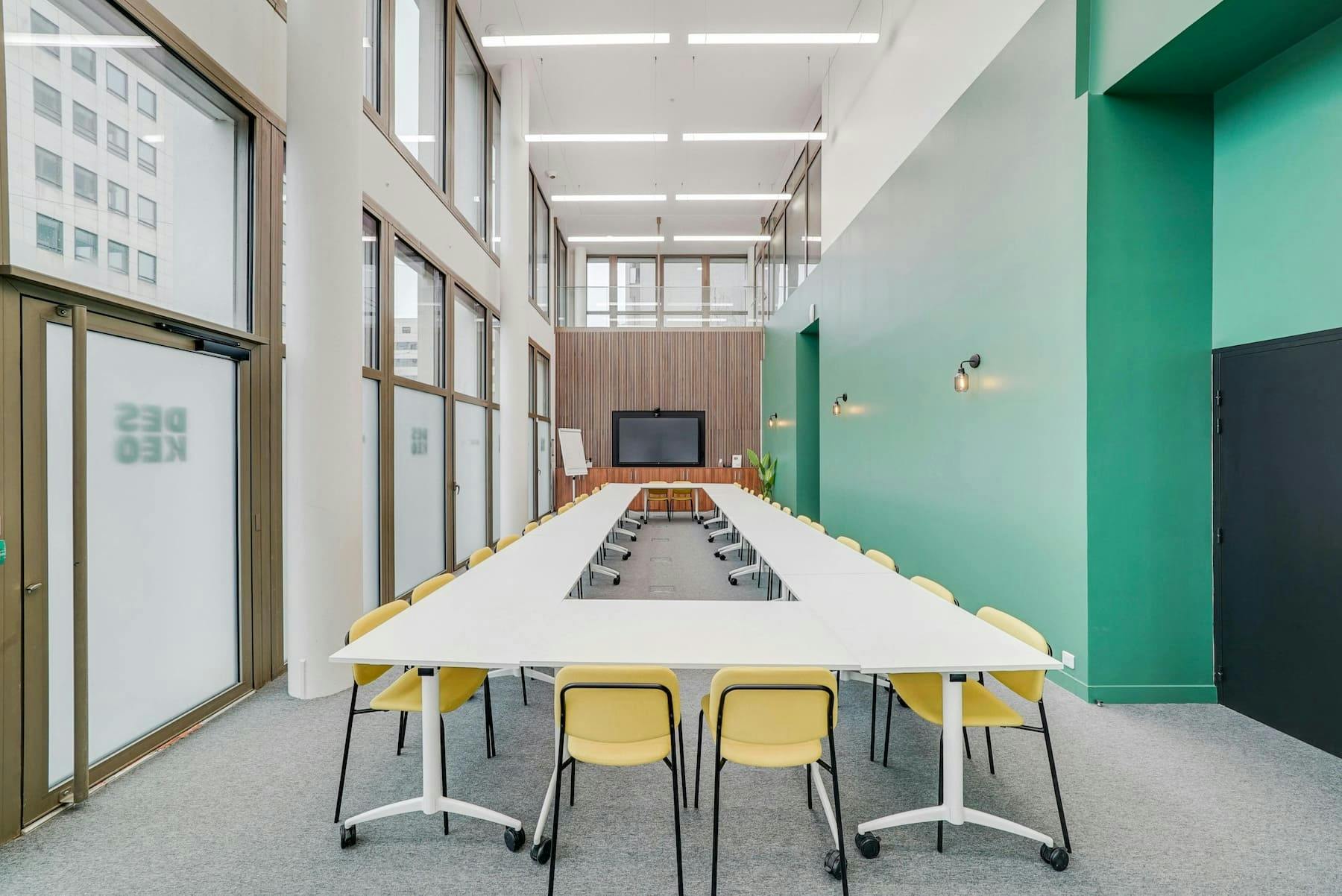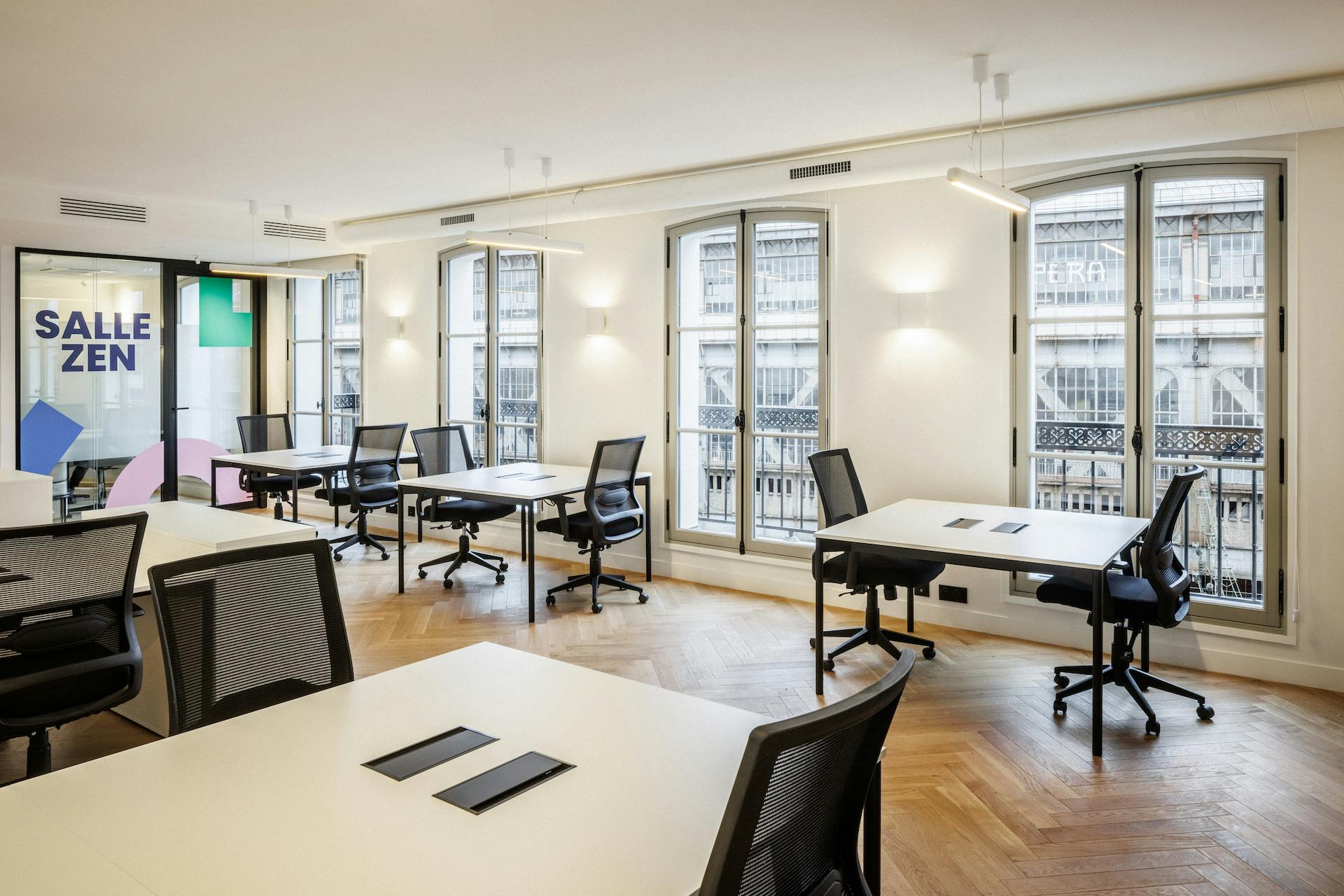

Lighting design: a key element of space planning
Lighting Design refers to the art of designing lighting that suits an interior or exterior space.
Far more than just an aesthetic detail, this specialty enables the creation of a space's ambiance, accentuates its architecture, optimizes occupants' visual comfort, and fosters an atmosphere aligned with the space's activities. Light Designers are not merely artists; they are lighting experts capable of understanding a project's specific needs and offering tailor-made lighting solutions. Their technical and artistic skills are invaluable for enhancing workplaces and living spaces.
Do you have an office layout project? Do you want to create a lighting ambiance conducive to well-being and productivity? Then Lighting Design is a concept that might interest you. Deskeo provides insights for you.
Understanding the essence of the Light Designer profession
The Light Designer is the architect of light. As such, they must:
- Analyze the project's needs and define a lighting concept.
- Choose the most suitable types of luminaires and lamps.
- Create lighting plans and diagrams.
- Perform photometric and metric calculations.
- Supervise the installation and commissioning of equipment.
- Verify lighting compliance in real situations.
Deciphering Light Design: a blend of function and emotion
Far from being merely a technical matter, light design relies on a perfect harmony between function and emotion.
Light Designers master the scientific aspects of light, understanding the characteristics of different light sources, calculating illumination levels precisely, and determining optimal luminaire positioning.
However, their work also demands sensitivity and creativity to craft unique ambiences that resonate with a space's identity. These lighting design experts manipulate shadows, light, contrasts, and colors to evoke emotions in space occupants. Their lighting tells a story and creates an immersive experience.
The crucial role of the Light Designer in interior lighting design
The lighting designer is an essential link in any interior space planning project. They meticulously analyze the specific needs related to the space's use, considering technical and architectural constraints. Then, they design a bespoke lighting system by creating precise plans and diagrams. During construction, they ensure that the recommended luminaires and chosen sources are installed correctly. Finally, once the lighting is operational, they fine-tune settings and measurements to ensure compliance with the initial concept.
Creating ambiance with the right lighting
Lighting is a powerful tool for creating a unique atmosphere. But how do you choose the appropriate lighting ambiance for a space? In theory, it's straightforward! You should:
- Define the space's use and main activity and select 3 or 4 adjectives describing the desired effect.
- Create a layout plan for light sources.
- Choose the desired lighting nature (accentuation, concentration, etc.).
- Determine the color temperature.
- Select luminaires and play with contrasts and light modulation.
However, the practice may be more challenging for non-experts. That's why the expertise of a Light Designer can be extremely useful.
Interpreting lighting ambiance with the right lighting design
To create a successful lighting ambiance, lighting designers must first understand and interpret the style desired by their clients. Soft and warm lighting isn't achieved with the same technical choices as an industrial or mysterious style.
Therefore, lighting designers must demonstrate a keen ability to listen and inquire to understand their clients' underlying needs and translate sometimes vague intentions into precise lighting schemes. Once they have all the elements at their disposal, Light Designers propose different artistic directions through visual references before finalizing the lighting plan and selecting the right luminaires based on the desired lighting.
Choosing the right luminaires based on the desired lighting
The type of luminaire greatly influences the style of lighting ambiance. For example, suspensions create a very different atmosphere from adjustable spotlights on rails. Therefore, the lighting designer must select the most suitable luminaires based on the desired effect. For example:
- Accent lighting requires precise luminaires with an intensive beam.
- Uniform diffuse lighting rather requires luminaires with wide diffusion.
The lighting designer's mission is to identify all the details to orchestrate the desired lighting composition. And, thanks to their talents, they can enhance the comfort of a company's employees at work.
Lighting Design to improve workplace comfort
Lighting has a direct impact on employees' comfort, well-being, and productivity. Therefore, good lighting design is essential for any tertiary workspace as it allows for:
- Significantly reducing visual fatigue and headaches related to inadequate lighting.
- Improving concentration and vigilance through sufficient light levels on workstations.
- Reducing stress and anxiety by implementing pleasant lights that respect circadian rhythms.
- Enhancing well-being with warm tones and controlled natural light.
- Optimizing visual performance through uniform lighting that eliminates glare and reflections.
- Precisely adapting color and illumination levels to each type of visual task.
- Enhancing interior architecture and the company's identity through signature lighting choices.
Lighting design in a nutshell...
In summary, the light designer or lighting designer is an expert who can design ergonomic, comfortable, and dynamic lighting that adapts to the specific needs of each area of the workspace. They thus contribute fully to the success of an office layout project.
- Lighting Design is the art of designing lighting suitable for a space, to create an atmosphere and highlight architecture.
- Light Designers are lighting experts who analyze a project's needs and offer tailor-made lighting solutions.
- To create a lighting ambiance, you need to define the space's use, choose the type of lighting, color temperature, and luminaires.
- The lighting designer selects luminaires adapted to the desired effect: accentuation, diffusion, etc.
- A successful lighting design project improves comfort and productivity at work by reducing visual fatigue and stress.

Contact Us
We find your Perfect fit!

